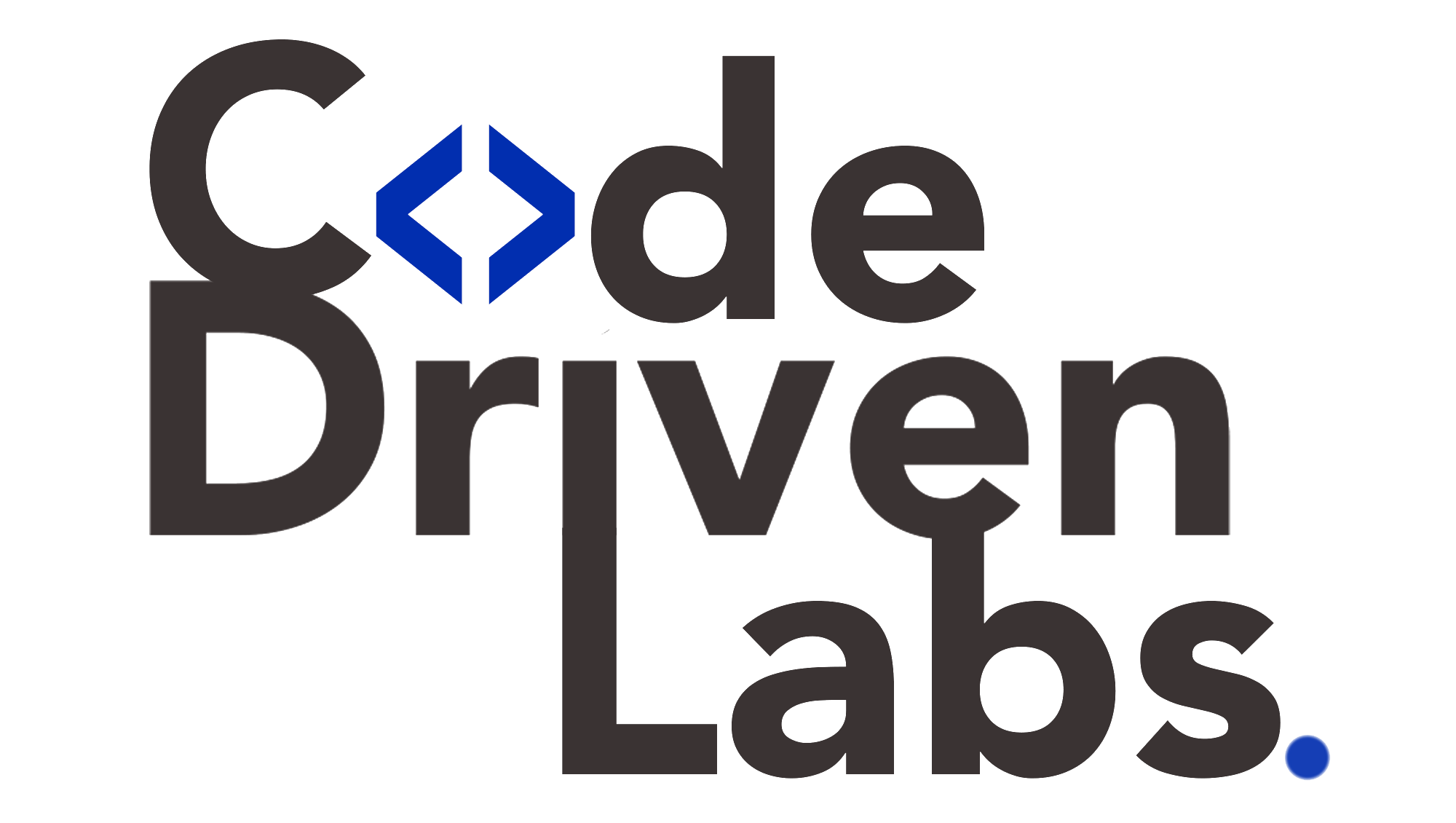Level up your business with US.
- Home
- How to Build a Scalable Data Science Pipeline in the Cloud
How to Build a Scalable Data Science Pipeline in the Cloud
June 21, 2025 - Blog
How to Build a Scalable Data Science Pipeline in the Cloud
In today’s data-driven world, organizations increasingly rely on advanced data science techniques to extract meaningful insights, automate decisions, and drive innovation. However, building a data science pipeline that is scalable, efficient, and maintainable is a major challenge—especially when data volumes explode and models evolve rapidly. This is where the cloud becomes a game-changer.
This blog will guide you through building a scalable data science pipeline in the cloud and highlight how Code Driven Labs empowers businesses to operationalize their data science efforts with agility and precision.

Understanding a Data Science Pipeline
A data science pipeline is a sequence of processes that data passes through, from raw collection to model deployment and monitoring. The stages typically include:
-
Data Collection
-
Data Ingestion
-
Data Cleaning & Transformation
-
Feature Engineering
-
Model Training
-
Model Validation
-
Deployment
-
Monitoring & Retraining
When these steps are run on local infrastructure, bottlenecks can arise due to limited compute resources, storage capacity, and team collaboration challenges. A cloud-native approach eliminates many of these problems, allowing businesses to scale operations on demand.
Why Cloud Matters for Scalable Data Science
The cloud offers several advantages for building scalable data pipelines:
-
Elastic Compute and Storage: Scale compute resources up or down based on demand.
-
Collaboration: Multiple teams can access shared resources securely from anywhere.
-
Managed Services: Reduce overhead by using fully managed tools like AWS SageMaker, Google Vertex AI, or Azure Machine Learning.
-
Automation: CI/CD pipelines, infrastructure as code, and automated retraining help streamline operations.
-
Cost Optimization: Pay only for what you use and scale intelligently.
Key Components of a Cloud-Based Scalable Data Science Pipeline
Let’s break down each stage of the pipeline and how to implement it in the cloud.
1. Data Collection and Ingestion
Cloud-native data ingestion tools help aggregate data from APIs, files, IoT devices, and databases.
Tools:
-
AWS Kinesis, Azure Event Hubs, Google Pub/Sub for real-time data streams
-
Cloud Storage (Amazon S3, Azure Blob Storage, Google Cloud Storage) for batch data
-
ETL/ELT tools like AWS Glue, Azure Data Factory, or Google Dataflow
Best Practice: Automate data ingestion jobs and version control raw data to track changes and maintain reproducibility.
2. Data Cleaning and Transformation
Transforming raw data into clean, structured formats is crucial. This step often includes handling missing values, filtering outliers, and normalizing features.
Tools:
-
Apache Spark on Databricks
-
AWS Glue and AWS Athena
-
dbt (data build tool) for SQL-based transformations
Best Practice: Use distributed computing to handle large datasets efficiently. Store intermediate results in cloud object storage or data warehouses (e.g., BigQuery, Snowflake).
3. Feature Engineering
Feature engineering extracts the right variables to feed into machine learning models. This may involve aggregations, time-based lags, text encoding, or geospatial operations.
Tools:
-
Feature stores like Tecton, Amazon SageMaker Feature Store, or Vertex AI Feature Store
-
Pandas and PySpark for custom feature engineering in notebooks
Best Practice: Version and document features so they can be reused across models. Use a feature store to promote consistency.
4. Model Training and Hyperparameter Tuning
This stage involves training models with historical data and fine-tuning them to optimize performance.
Tools:
-
Scikit-learn, XGBoost, TensorFlow, PyTorch
-
SageMaker, Vertex AI, Azure ML for distributed training and AutoML
-
MLFlow or Weights & Biases for experiment tracking
Best Practice: Leverage GPU/TPU compute nodes for deep learning. Automate hyperparameter tuning using cloud-native AutoML features or Bayesian optimization frameworks.
5. Model Validation
Before deploying, validate the model on unseen data using techniques like k-fold cross-validation or A/B testing.
Tools:
-
Jupyter Notebooks on cloud platforms
-
MLFlow or cloud-native experiment tracking tools
Best Practice: Use reproducible validation datasets and maintain performance dashboards for team visibility.
6. Deployment and Serving
Once validated, the model must be deployed to a production environment for real-time or batch predictions.
Deployment Types:
-
Batch Serving: Triggered at intervals; ideal for reports or bulk processing
-
Real-time Serving: Via REST APIs using containers (Docker, Kubernetes, or managed services)
Tools:
-
Amazon SageMaker Endpoints, Google AI Platform Prediction, Azure ML Inference
-
Kubernetes with KFServing or BentoML
Best Practice: Use canary deployments and rollback strategies. Automate with CI/CD tools like GitHub Actions or Jenkins.
7. Monitoring and Retraining
Deployed models must be continuously monitored for data drift, performance degradation, and anomalies.
Tools:
-
Evidently AI for model monitoring
-
Prometheus + Grafana for infrastructure monitoring
-
MLFlow or Datadog for metric tracking
Best Practice: Automate retraining workflows triggered by performance thresholds or data changes. Store logs and audit trails for compliance.
Challenges in Building a Scalable Data Science Pipeline
Despite the availability of cloud tools, many organizations struggle with:
-
Integrating disparate tools and data sources
-
Ensuring collaboration across data engineers, data scientists, and DevOps
-
Scaling pipelines across business units
-
Managing cost and security
-
Automating retraining without introducing bugs
How Code Driven Labs Helps
Code Driven Labs specializes in building cloud-native data science solutions that are modular, scalable, and business-ready. Here’s how they help clients overcome common challenges and accelerate ROI:
1. End-to-End Pipeline Design
Code Driven Labs offers end-to-end architecture design—from data ingestion to model deployment—tailored to your business goals and data maturity. They follow best practices in cloud infrastructure, security, and performance optimization.
2. Toolchain Integration
They help you integrate best-in-class open-source and enterprise tools across your stack. Whether it’s Databricks for Spark processing, MLFlow for tracking, or Kubernetes for scalable serving, Code Driven Labs ensures seamless integration and automation.
3. Custom ML Ops Frameworks
Code Driven Labs builds custom MLOps frameworks to enable:
-
Version-controlled workflows
-
Automated testing and deployment
-
Monitoring dashboards and alerts
-
Retraining pipelines
This ensures consistency, reproducibility, and traceability across data science projects.
4. Cost and Performance Optimization
They help businesses optimize compute resource allocation using:
-
Spot instances and autoscaling
-
Efficient storage tiering
-
Code and query performance tuning
This enables teams to scale without escalating costs.
5. Compliance and Security
Code Driven Labs ensures all pipelines comply with security standards like GDPR, HIPAA, and ISO. They implement role-based access, data masking, encryption, and audit trails for sensitive data workflows.
6. Team Enablement and Training
Beyond implementation, Code Driven Labs provides training for internal teams on using the pipeline, understanding MLOps, and managing cloud workflows. This builds self-sufficiency and speeds up adoption.
7. Industry Use Case Accelerators
They offer pre-built templates and accelerators for industries like:
-
Healthcare (predictive diagnostics, claim fraud)
-
Retail (demand forecasting, pricing optimization)
-
Real Estate (property valuation models)
-
Fintech (credit scoring, fraud detection)
These templates reduce setup time and allow quick iteration.

Final Thoughts
Building a scalable data science pipeline in the cloud isn’t just about choosing the right tools—it’s about designing intelligent workflows that adapt to growing data, evolving models, and shifting business priorities. A well-architected pipeline ensures faster time-to-insight, improved model reliability, and reduced operational burden.
By partnering with Code Driven Labs, businesses gain a strategic ally in navigating the complexities of cloud data science. Their expertise across infrastructure, AI/ML, and DevOps ensures that your pipeline is not only scalable but also future-proof.
